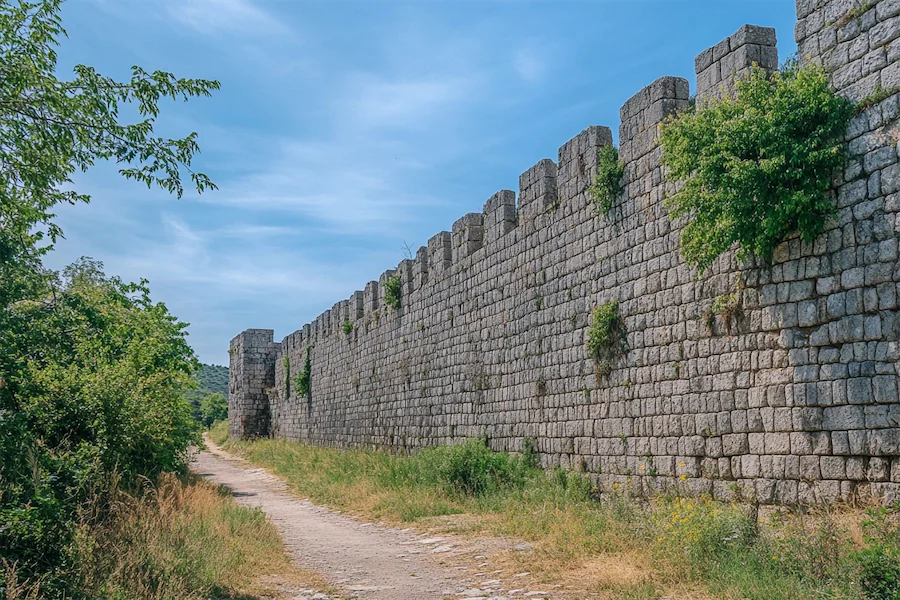The Byzantine Empire, with its capital at Constantinople (modern-day Istanbul), was renowned for its formidable defensive structures, particularly the Theodosian Walls. These walls not only exemplified the empire’s architectural prowess but also played a crucial role in its defense for over a millennium.
History and Origins of the Theodosian Walls
The initial fortifications of Constantinople were established by Emperor Constantine the Great in the early 4th century. However, as the city expanded and external threats intensified, there arose a need for more robust defenses. In the early 5th century, during the reign of Emperor Theodosius II, the Theodosian Walls were constructed. These walls extended the city’s boundaries and provided unparalleled protection against invasions.
Key Features of the Theodosian Walls
The Theodosian Walls were a marvel of military engineering, consisting of multiple defensive layers:
- Inner Wall: Approximately 4.5 meters thick and up to 13 meters high, fortified with towers standing around 19 meters tall at roughly 75-meter intervals.
- Outer Wall: Situated in front of the inner wall, it stood about 9 meters high and was also equipped with towers, providing an additional line of defense.
- Moat: Beyond the outer wall lay a wide moat, further deterring any approaching forces.
This layered defense system was instrumental in repelling numerous sieges throughout Byzantine history.
Applications of the Theodosian Walls
Beyond their primary function of defense, the walls also served as a symbol of imperial power and architectural innovation. The strategic placement of gates, such as the renowned Golden Gate, facilitated controlled access and ceremonial entries into the city. The walls’ design influenced subsequent military architecture in both the Eastern and Western worlds.
Considerations When Studying the Theodosian Walls
When examining the Theodosian Walls, it’s essential to consider:
- Historical Context: Understanding the geopolitical threats of the era, including invasions by various groups, underscores the necessity and significance of such formidable defenses.
- Architectural Techniques: The construction methods employed reflect the advanced engineering capabilities of the Byzantines, including the use of massive stone blocks and complex mortar mixtures.
- Preservation Efforts: Over the centuries, natural disasters and human activities have led to the deterioration of the walls. Modern preservation initiatives aim to maintain this historical monument for future generations.
Conclusion
The Theodosian Walls stand as a testament to Byzantine architectural ingenuity and strategic foresight. Their enduring legacy offers valuable insights into the empire’s history, military strategies, and urban development. Studying these walls provides a window into a civilization that skillfully blended functionality with grandeur, leaving an indelible mark on architectural history.
